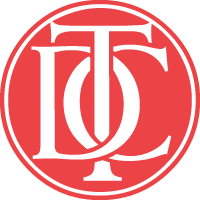TDC Type-design Competition 2012
by John Berry
The Type Directors Club in New York City has been holding an annual competition for the best in typography (that is, the use of type in graphic design) since the 1950s. In 1997, James Montalbano and Paul Shaw founded TDC2, a second competition that dealt specifically with the design of typefaces. Together, they chaired the first two TDC2 competitions, and they have remained closely involved with it ever since.
TDC Salon: The Judges Night 2012 from Type Directors Club on Vimeo.
As Paul wrote in his chairman’s statement for that first competition, “The genesis for the Type Directors Club Type Design Competition (TDC2) came about from my frustration, shared by the other type designers on the Board of Directors of the TDC, over the number and quality of type designs chosen in the annual competition.” Until then, type designs had been judged alongside books, brochures, annual reports, and packaging. Now they would be judged on their own merits, by judges who understood the design of type.
One of the crucial factors in judging the design of a typeface is seeing it in use. For the first TDC type competition, Montalbano and Shaw devised a template that they hoped would show all of the typefaces in comparable situations, at a variety of sizes. As James said in his chairman’s statement, although they had “created a poster that most people liked,” they had also “created submission templates that most people hated.” In later years, designers were free to send in their typeface samples in any form they liked, though the organizers encouraged them to include a complete character set and to show off their work at its best. (When I chaired the type-design competition in 2001, we asked for 11″×17″ or A3 proof sheets, one typeface per sheet, and explained: “Each proof should show the typeface in whatever way seems appropriate for that face; proofs may include, but are not limited to, headlines, short or long passages of text, sample pages/double-page spreads of book or magazine make-up, or multiple-column text.”) But not all type designers, even the best ones, are very good graphic designers; this problem of displaying the typeface at its best for the judging has bedeviled the competition from the beginning.
This year’s competition—the fifteenth, if I’m counting right—was chaired by Maxim Zhukov, who chose an all-star jury of well-known names: Matthew Carter, Roger Black, Erik Spiekermann, and Paul Shaw. The number of submissions was slightly down from the year before (173 entries from 27 countries); submissions from outside the United States outnumbered the US entries, but not by as much as they had the year before. (In 1997, that first competition had twice as many submissions – but then, it was the first, and its scope was larger, as it covered the entire decade up to then. Subsequent competitions have covered only single years.)
From the outset, the TDC type design competition has encouraged submissions of non-Latin type designs, although it is sometimes a problem making sure that there are judges who are familiar with each script. Many type designers can judge the soundness of character designs in a script that they can’t read, but to evaluate how a text typeface works in practice requires familiarity with the language it’s used for. Even when he wasn’t chairing the competition, Maxim has made heroic efforts over the years to back up the juries with expert advice on unfamiliar writing systems.
The judging takes place in New York over a weekend in January. The essentials of a type-design judging are always the same: the judges walk along a series of long tables where the type specimens are laid out side by side, peering down at the designs, sometimes bending close to examine details, other times clustering together to discuss a particular question. The first cut is where the unsuccessful designs get weeded out. In some competitions, the judges choose which ones to eliminate; in others, they indicate which ones they think should stay in for the next round, and the rest are eliminated. TDC2 uses the latter method. Either way, the second round is where it gets interesting: narrowing it down to the truly best designs. This is where the judges start arguing, or at least discussing the merits of particular typefaces and what works and doesn’t work about them. As I recall from the year I chaired the competition, these discussion were the most fascinating; they really brought out the judges’ individual experiences and knowledge, as each wrestled with fundamental questions of how to evaluate quality.
This year, the TDC2 jury chose only thirteen typefaces as winners – an unusually low percentage of those that were entered. The general feeling among the judges seemed to be that while there were plenty of good type designs submitted, there weren’t very many that stood out for their excellence. As Paul Shaw said afterward, “During the judging we all agreed that the level of type design has risen so much in recent years that we found ourselves looking for typefaces that had something extra. Just being a very good, very usable typeface was no longer enough to be chosen.” Many of the entries seemed to be good but not great: “We had a difficult time finding typefaces that seemed fresh and exciting.” Or, as Roger Black put it, “As we’ve seen in magazine and web site design, if the bottom is to be raised, the best design has to be more than accurate, clean and professional. It has to hit it out of the park.”
This is a constant debate in design competitions: should the winners be limited to those that are spectacular and original, or should they include those that are steady and craftsmanlike but not outstanding? It’s far from obvious which answer is preferable. In every aspect of graphic design, including the design of type, there is work that’s pyrotechnic and in your face, but that lacks real craft in how it’s put together. Then there is work that is solid and reliable, that rises to the best standards of competence, but that doesn’t break out of the box in any way.
As Roger Black pointed out, “The problem here is exactly what the AIGA was trying to address [in a recent debate about its own design competitions]: how do you judge design, when all the qualities may not be on the surface? A print advertising competition, a book cover competition, or even a book design competition are easier to judge than, say, a web site, where how it works is as important a part of the design as how it looks. With typefaces, the TDC is relying on the experience of judges to assess these issues. A stylish new stencil font (which was a winner this year), is easier to vote for than a new agate font, which really must be seen in use… And as for web fonts, God spare the judges.”
It’s easy to forget that during the judging process, the jury is seeing a whole host of entries all at once, which have to be judged quickly, intuitively, without any time to put them through their paces and see how they work in the real world. (The equivalent in book-design competitions is that the judges don’t have time to sit down and try to read any of the books, which is the ultimate test. It’s always easier, and tempting, to judge by the display typography or the images or the title page.)
A counter to this, for the individual submitters, is to produce a specimen showing off their typefaces the way they would most like to see them used. But too many of them don’t do this very well. “Some perfectly good typefaces were probably unfairly rejected,” according to Paul Shaw, “but the fault lay with the submitters more than with the jury. Many submitters do not showcase their typefaces properly.” The designs of the typeface showings need to be “both compelling and appropriate.” Paul said that he had voted for some typefaces that he was already familiar with and thought were excellent, but that the other judges didn’t agree. “Upon reflection, I realized that the showings were a let down. I was able to see beyond that because I had previously seen what the fonts were capable of. This may seem unfair, but it is the same way that fonts are often judged in the marketplace. It is not enough to be a good typeface. It is essential that a typeface show why it is good and what it is good for.”
There is another factor, which complicates the matter of showing all the aspects of a digital font: the increasing popularity of advanced OpenType layout features, whether they be something subtle like small caps and alternate styles of numerals or something exuberant like an explosion of ligatures and alternate letter forms. Complex scripts like Arabic or Devanagari complicate the problem because there’s so much to show; similarly, Chinese and Japanese fonts contain so many characters that it would be almost impossible to showcase them all in any meaningful way. As Maxim, this year’s chairman, put it, “Evaluating and judging OpenType entries to design competitions has become more challenging for the jurors than TrueType or Type 1 fonts, partly for the same reason: their glyph sets often transcend the traditional boundaries of text, display, pi, Latin, and other design and script categories used for the submission of entries.” Not only might a single OpenType font include a plethora of alternates and special features, it might also contain what is essentially more than one typeface. Many current type releases, for instance, include Latin, Greek, and Cyrillic versions in one font. (This is what Adobe means when it calls a font “Pro,” although most of us tend to think of this as indicating the presence of small caps, old-style figures, and related typographic niceties of the Latin alphabet.) All of this needs to be displayed gracefully and compellingly in the type specimen, if the designer hopes to have the jury adequately judge his or her work.
It’s also possible, as Maxim points out in his chairman’s statement, for one part of a large OpenType font to work better than another. Does the display version work as well as the text? Does the Greek match the quality of the Cyrillic? In past TDC competitions, sometimes the judges have decided to give an award to just one part of a type family, even though the whole family was submitted as one entry.
Paul Shaw sums up the perennial problem of judging a design competition: “I am looking for excellence more than innovation, but innovation always gets one’s attention.” But let’s give Roger Black the last word:
“When the TDC judges went over to a Pratt Institute building that weekend to look at the type design submissions, we saw a variety of designs, representing a wide range of styles from informal cursives to fresh takes on classic Romans. Nothing knocked us dead. But there were no howlers, either. We agreed that the bottom has been raised a great deal. There is better type design education (at Reading, RISD, and now Cooper), and better training of junior designers at dozens of foundries (following the example of David Berlow and the Font Bureau). This is encouraging, but we were left wistful and unsatisfied.”
All Photos © Catalina Kulczar-Marin
Reposted with permission from www.ilovetypography.com




